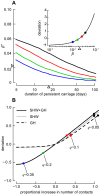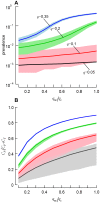A metapopulation model to assess the capacity of spread of meticillin-resistant Staphylococcus aureus ST398 in humans
- PMID: 23112817
- PMCID: PMC3480390
- DOI: 10.1371/journal.pone.0047504
A metapopulation model to assess the capacity of spread of meticillin-resistant Staphylococcus aureus ST398 in humans
Abstract
The emergence of the livestock-associated clone of meticillin-resistant Staphylococcus aureus (MRSA) ST398 is a serious public health issue throughout Europe. In The Netherlands a stringent 'search-and-destroy' policy has been adopted, keeping low the level of MRSA prevalence. However, reports have recently emerged of transmission events between humans showing no links to livestock, contradicting belief that MRSA ST398 is poorly transmissible in humans. The question regarding the transmissibility of MRSA ST398 in humans therefore remains of great interest. Here, we investigated the capacity of MRSA ST398 to spread into an entirely susceptible human population subject to the effect of a single MRSA-positive commercial pig farm. Using a stochastic, discrete-time metapopulation model, we explored the effect of varying both the probability of persistent carriage and that of acquiring MRSA due to contact with pigs on the transmission dynamics of MRSA ST398 in humans. In particular, we assessed the value and key determinants of the basic reproduction ratio (R(0)) for MRSA ST398. Simulations showed that the presence of recurrent exposures with pigs in risky populations allows MRSA ST398 to persist in the metapopulation and transmission events to occur beyond the farming community, even when the probability of persistent carriage is low. We further showed that persistent carriage should occur in less than 10% of the time for MRSA ST398 to conserve epidemiological characteristics similar to what has been previously reported. These results indicate that implementing control policy that only targets human carriers may not be sufficient to control MRSA ST398 in the community if it remains in pigs. We argue that farm-level control measures should be implemented if an eradication programme is to be considered.
Conflict of interest statement
Figures







References
-
- French GL (2010) The continuing crisis in antibiotic resistance. Int J Antimicrob Agents 36: S3–S7. - PubMed
-
- Kluytmans JAJW (2010) Methicillin-resistant Staphylococcus aureus in food products: cause for concern or case for complacency? Clin Microbiol Infect 16: 11–15 DOI: 10.1111/j.1469-0691.2009.03110.x. - PubMed
-
- Broens EM, Graat EAM, van der Wolf PJ, van de Giessen AW, van Duijkeren E, et al. (2011) MRSA CC398 in the pig production chain. Prev Vet Med 98: 182–189 DOI: 10.1016/j.prevetmed.2010.10.010. - PubMed
Publication types
MeSH terms
LinkOut - more resources
Full Text Sources
Medical
Molecular Biology Databases

